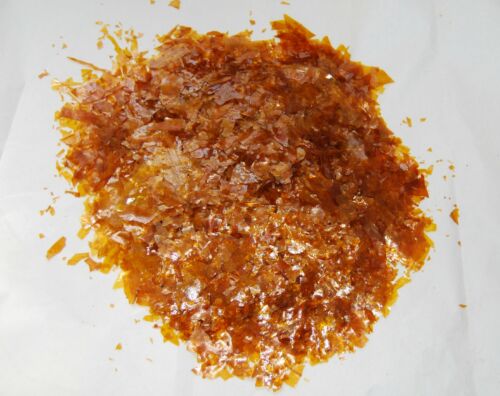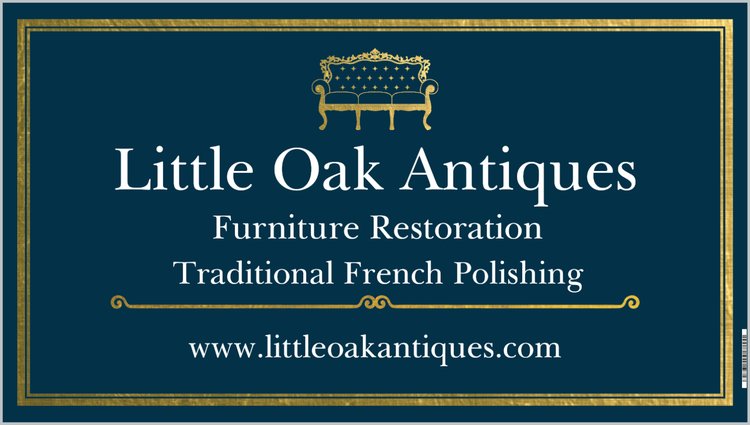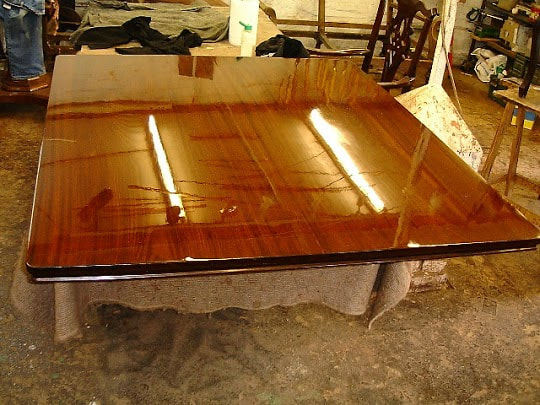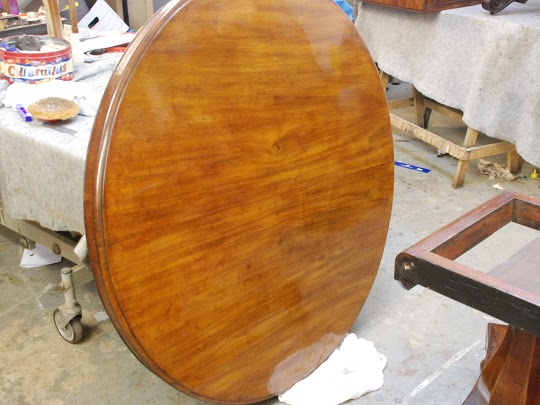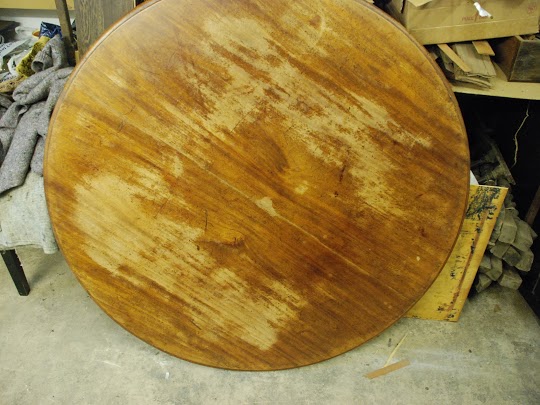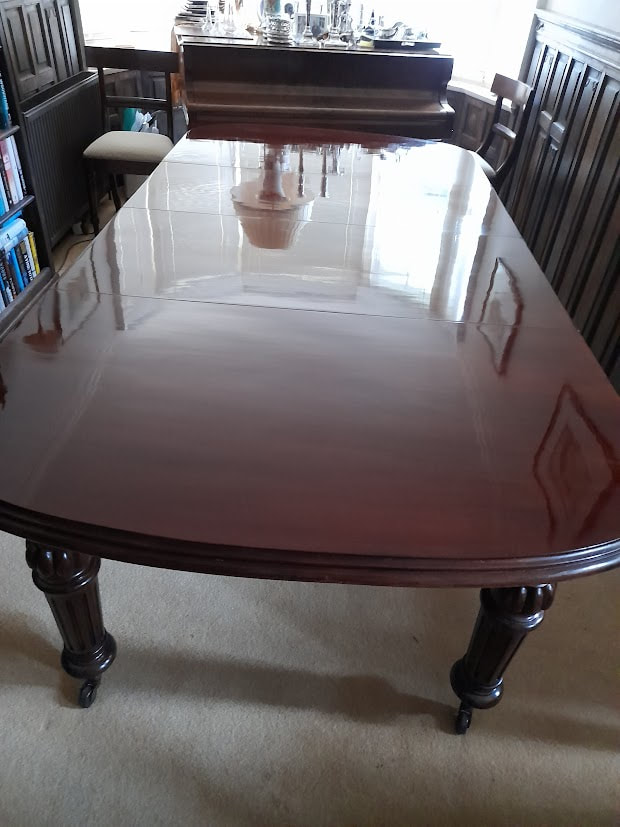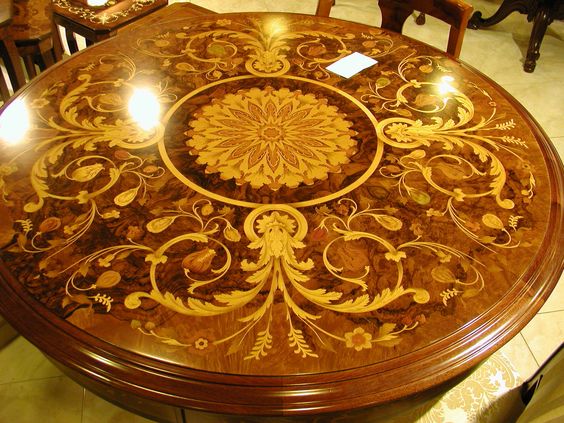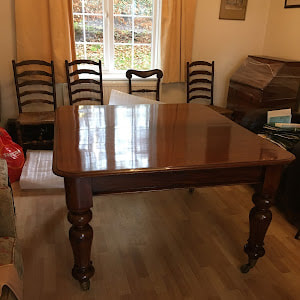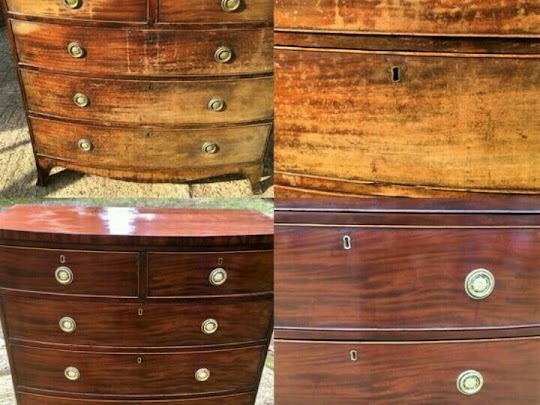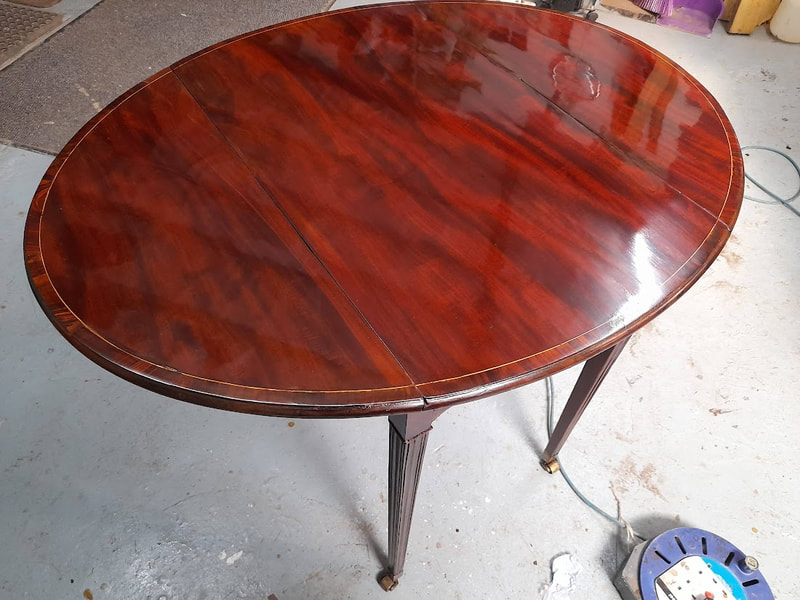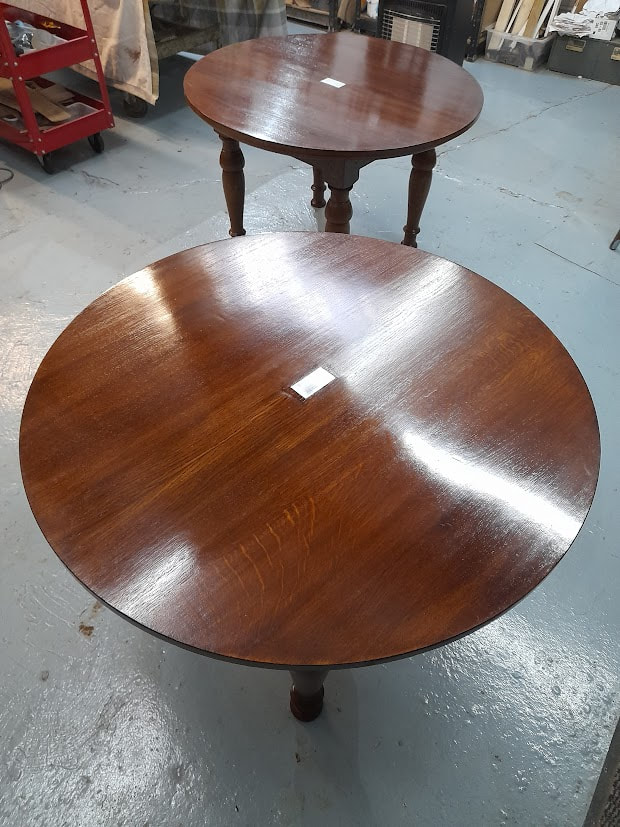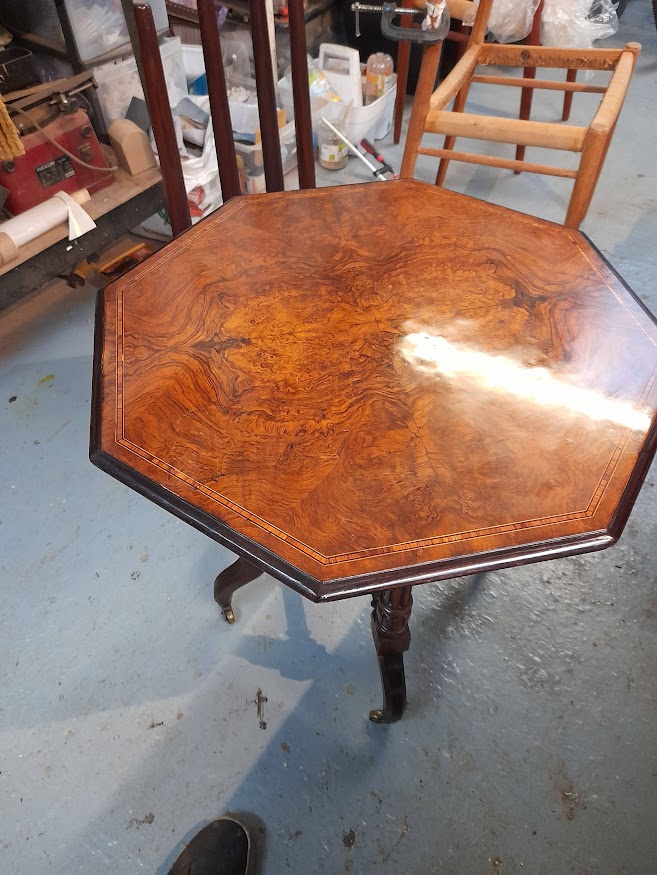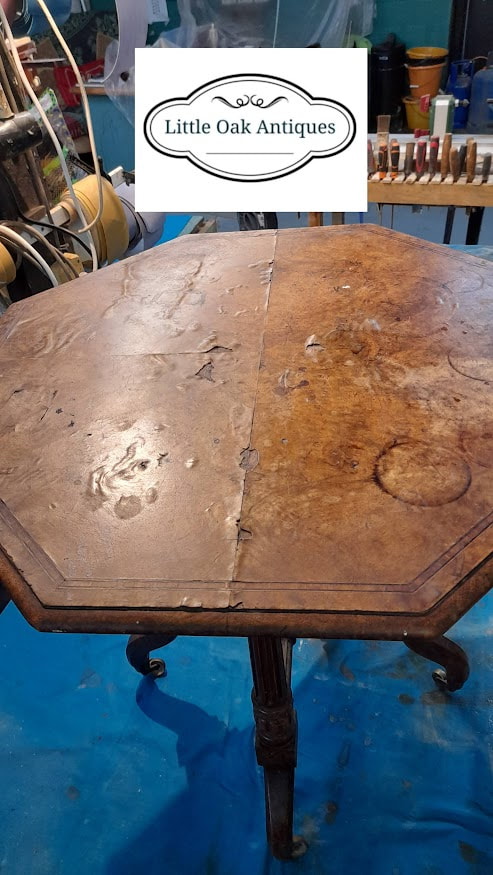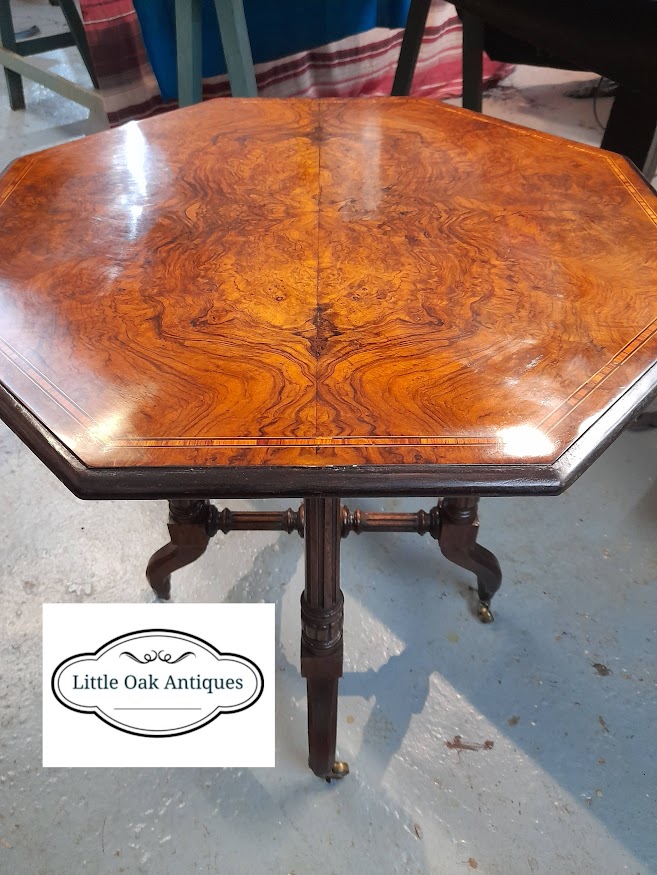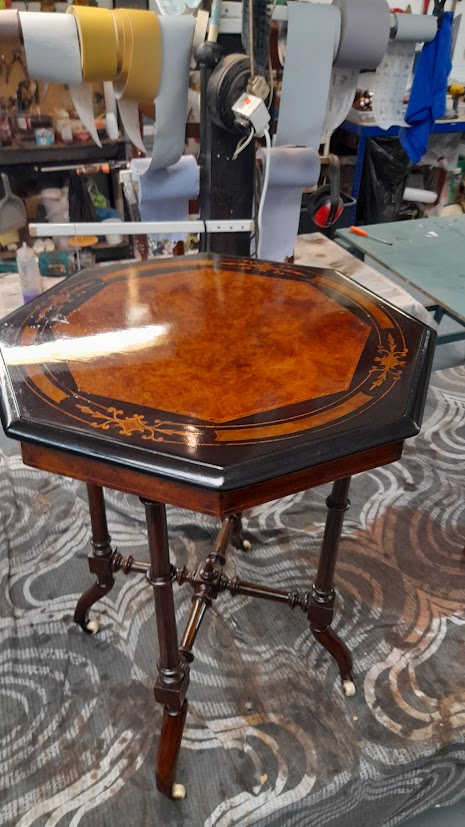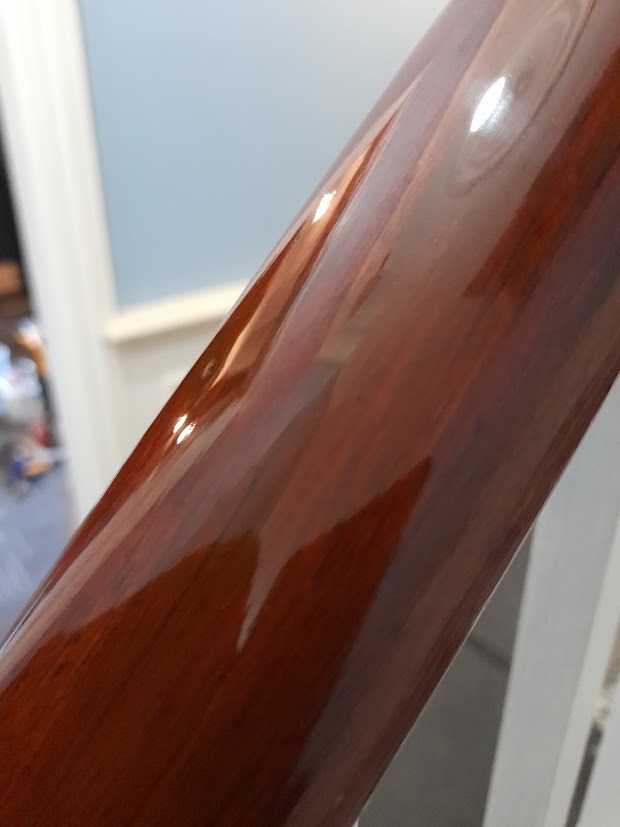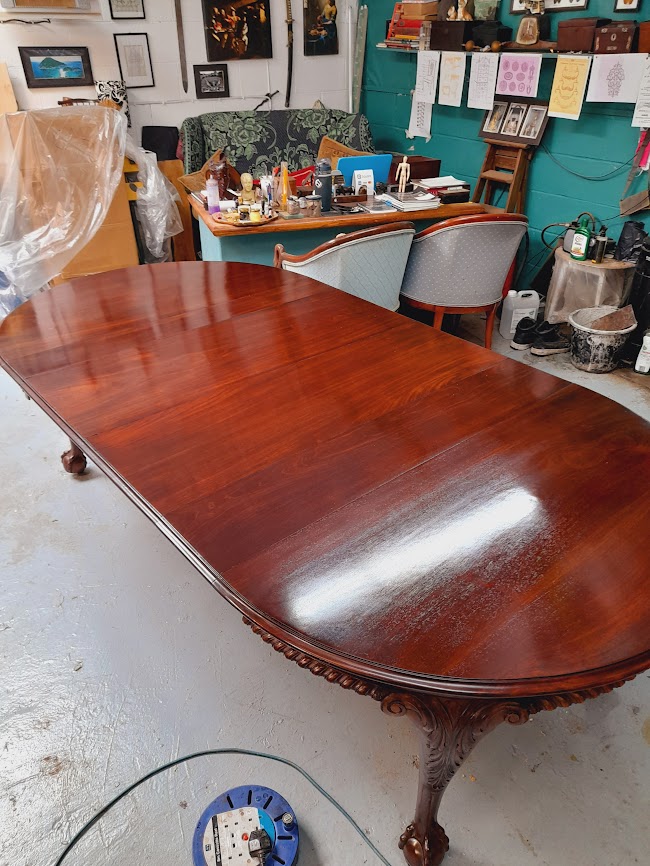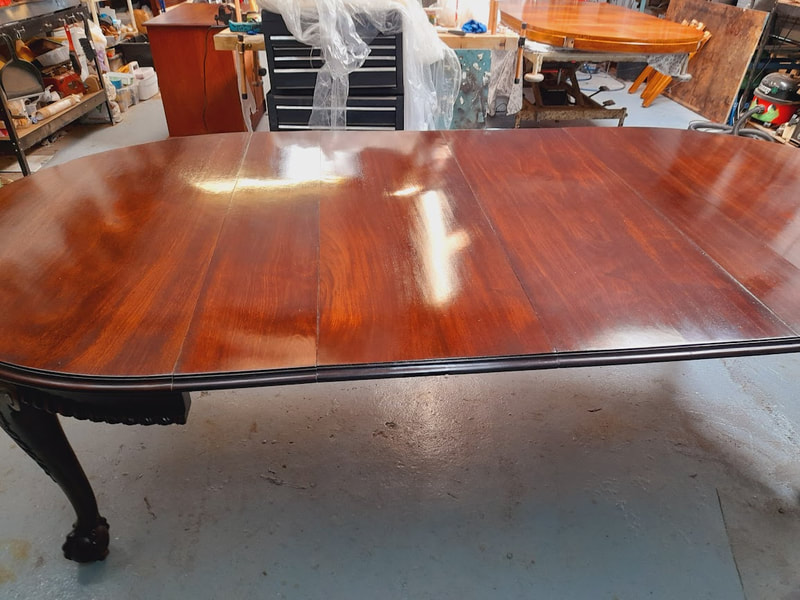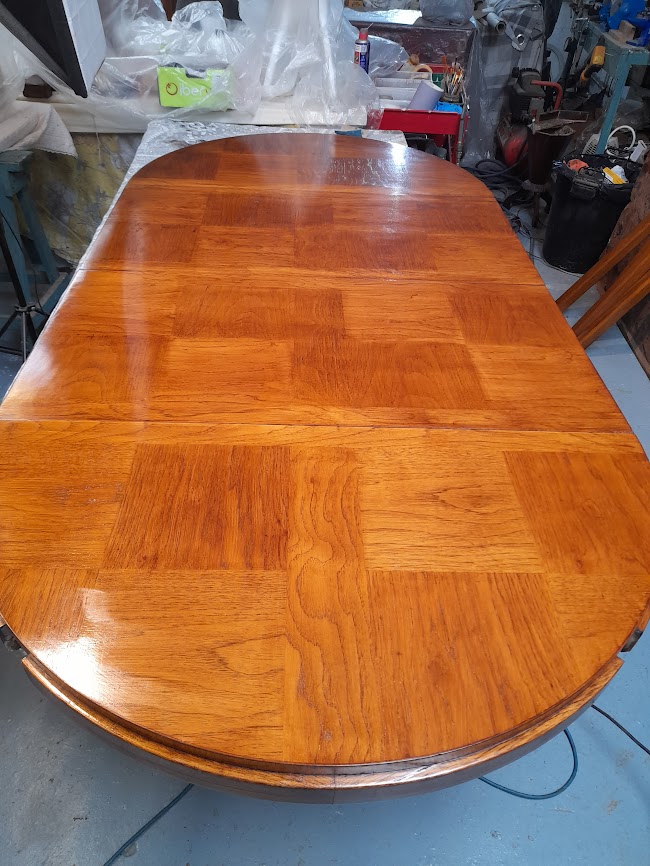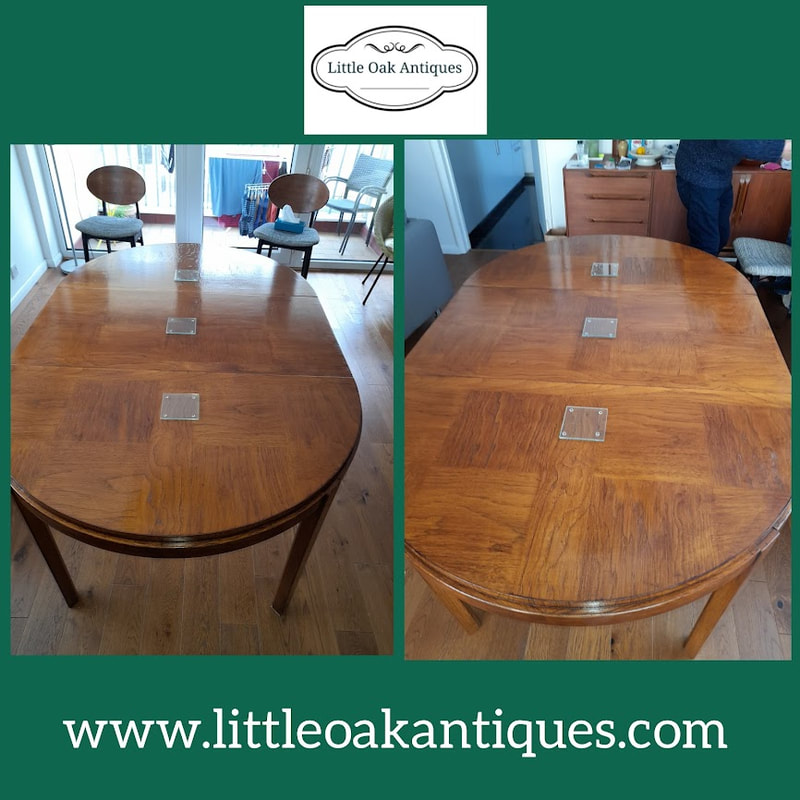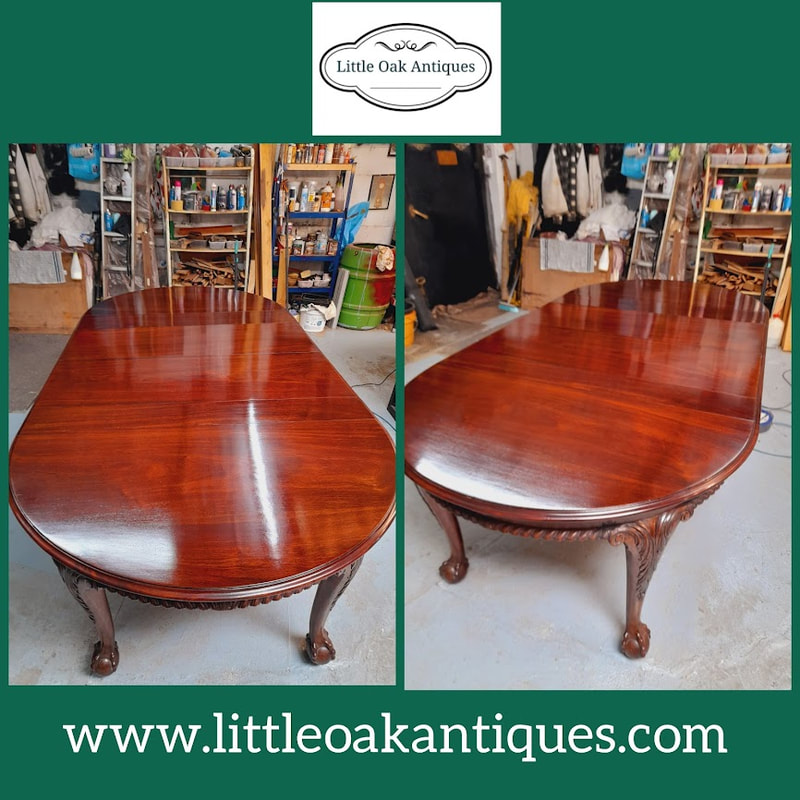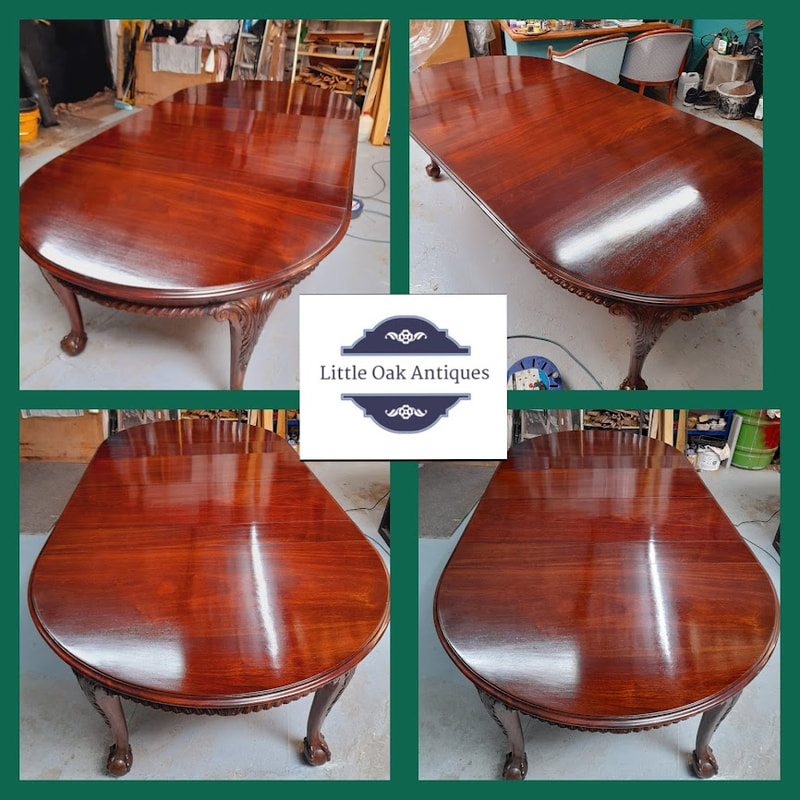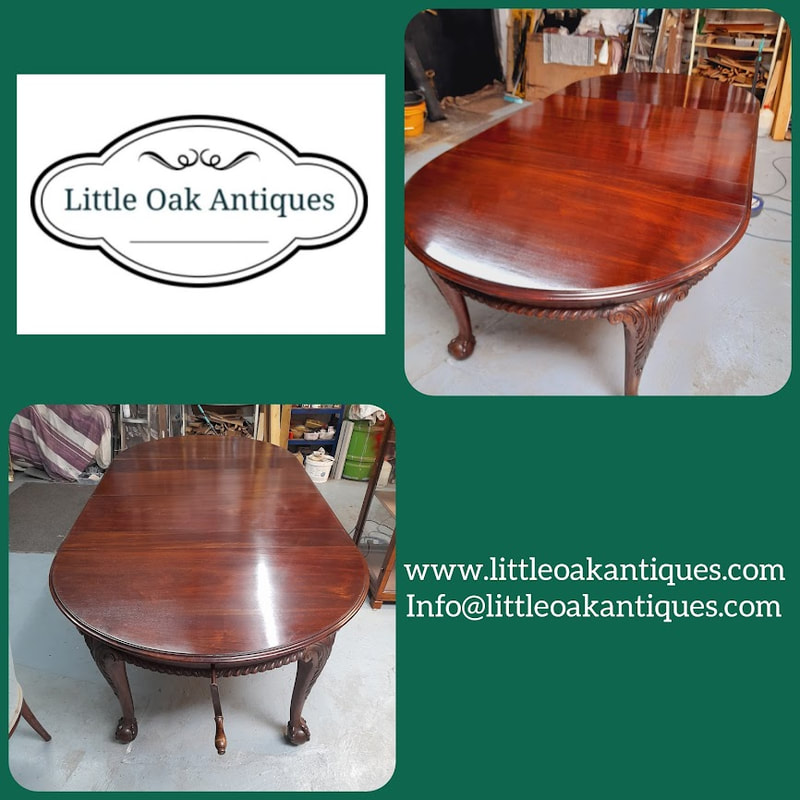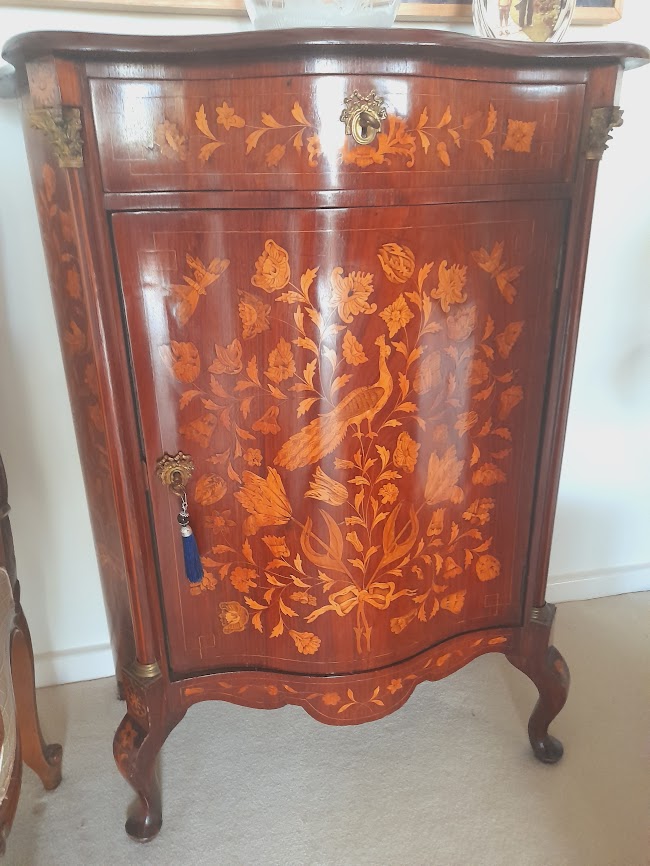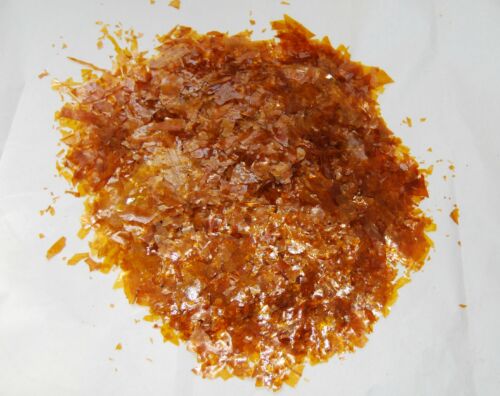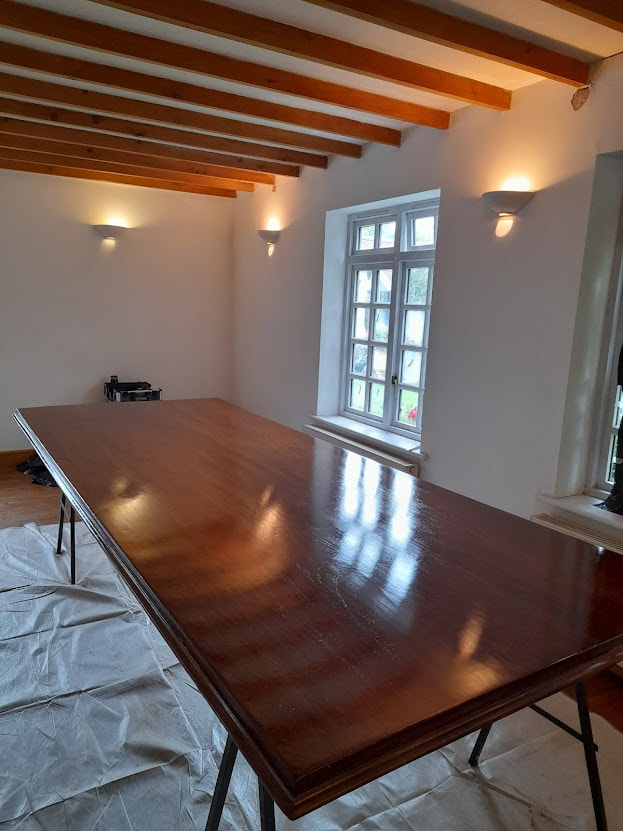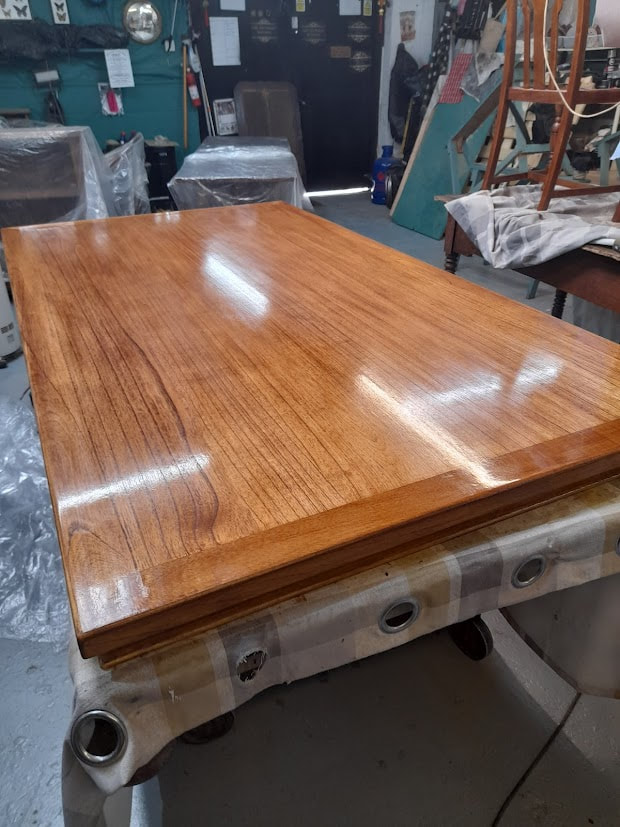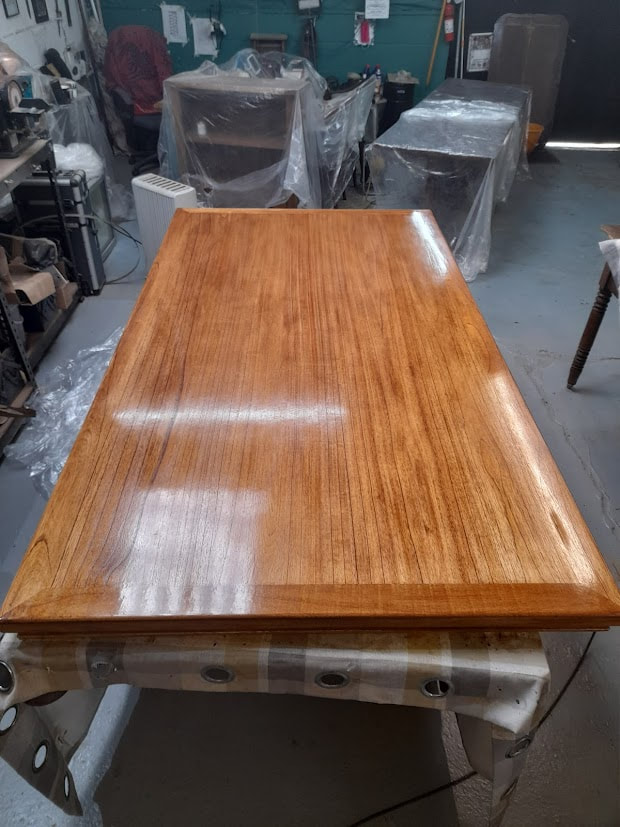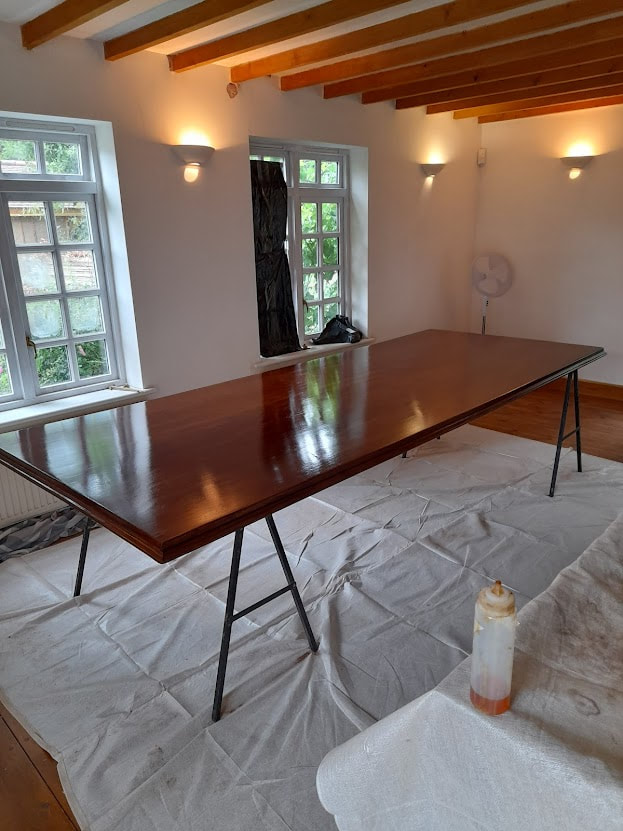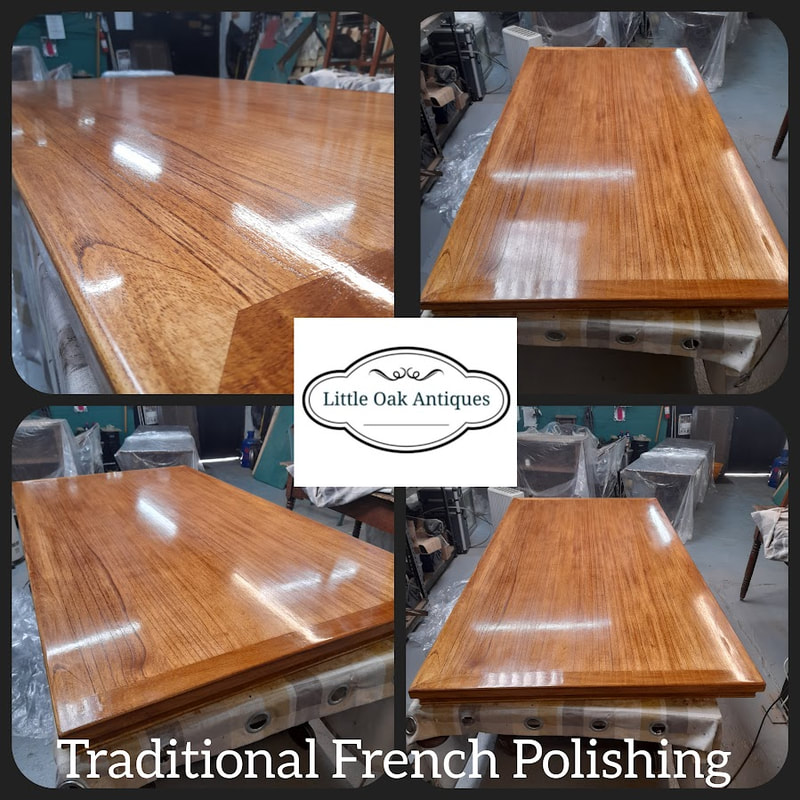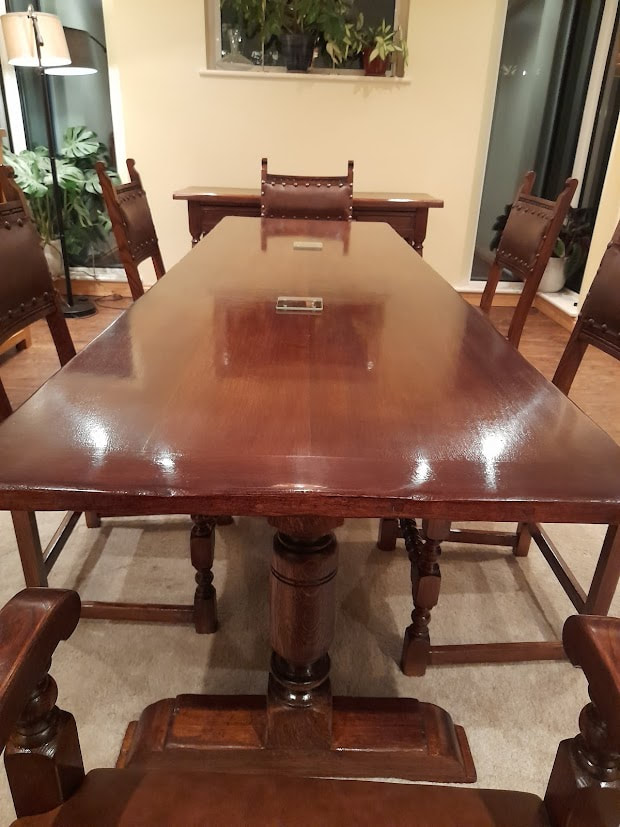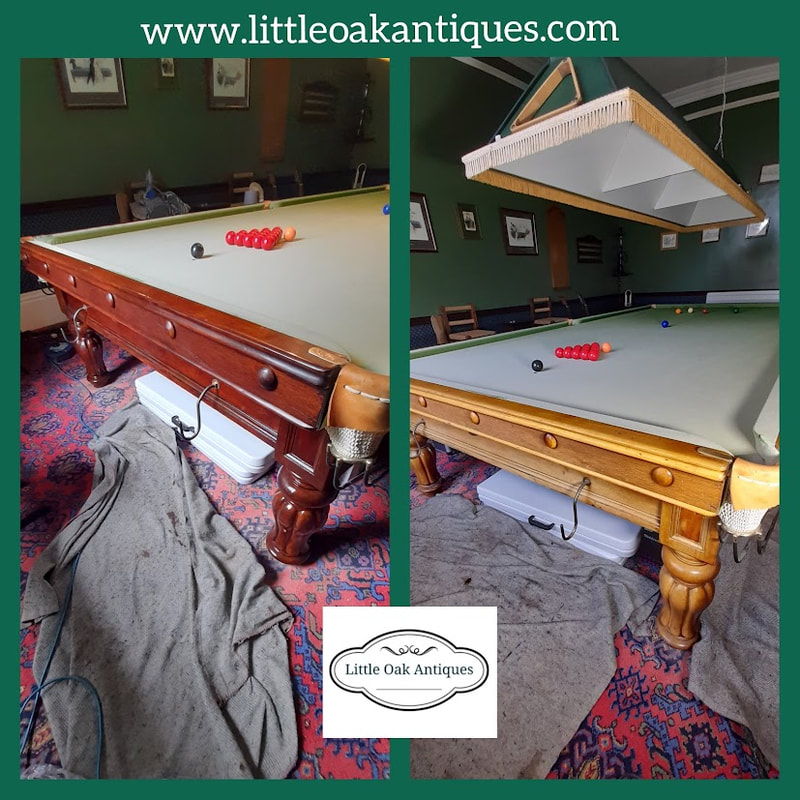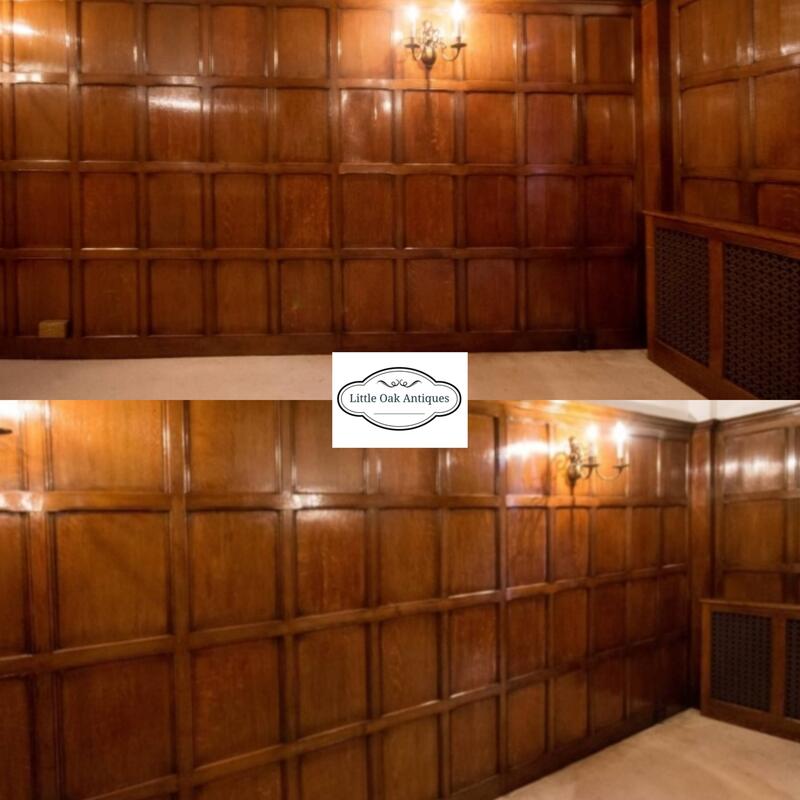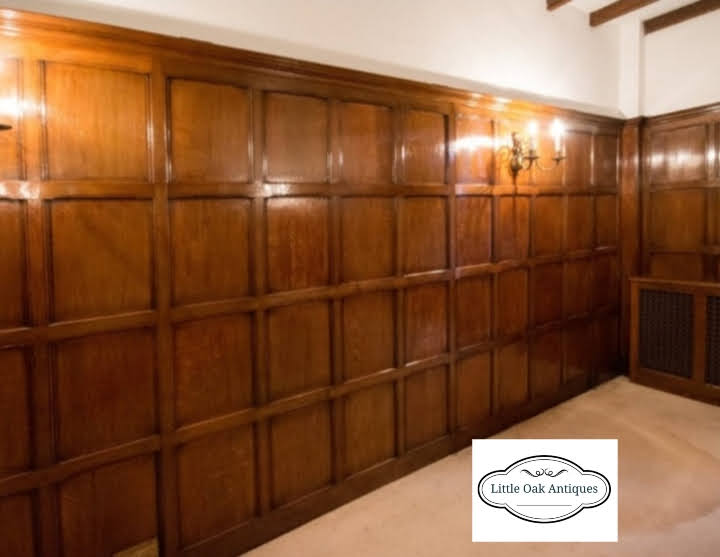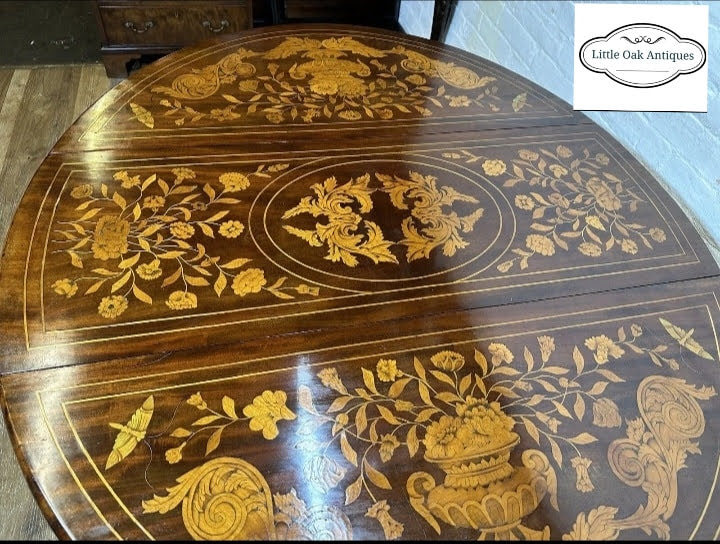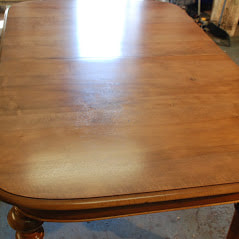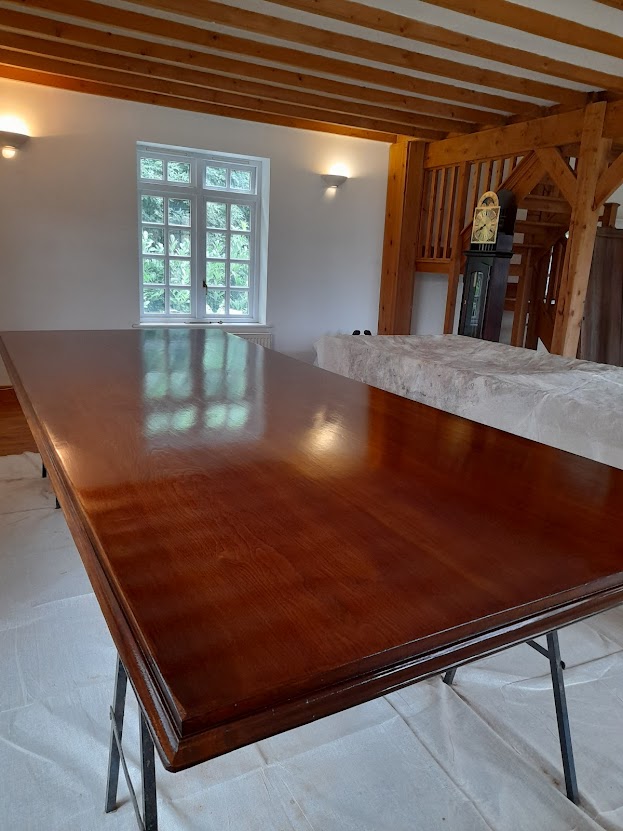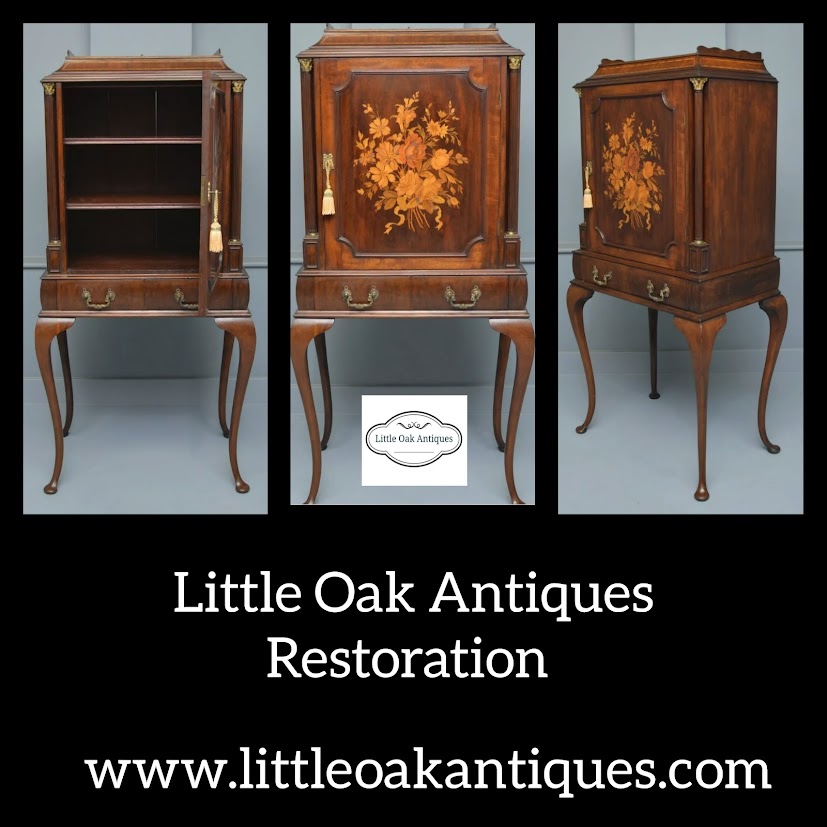French Polishing shellac
The term French Polishing refers to the art of using what is known as a pad, rubber, or muneca constructed
usually of cotton cloth wrapped around some type of core material to apply a finish to a wood surface by rubbing. So the term French polishing is really talking about the physical act and technique of applying the finish rather that the type of finish itself.
The most commonly used material to be applied with the French polishing technique is shellac. Shellac is a natural resin that is made by the Lac Beetle when it feeds on the sap of several different types of trees in India and Southeast Asia. The Lac beetle forms a shell in which it will lay eggs which is made of Lac. The process of harvesting and collecting lac begins as the trees are infested with lac beetles who build their shells on the branches of the tree which is then scraped off with a hot knife and collected.
The rough material collected for the initial harvest is called stick lac, because it contains a lot of sticks and dirt, dead bug bodies, etc. The stick lac is then refined in a number of ways; It can go to a factory for industrial processing to be carried out in order to purify it into the final thin flakes that it will be sold in for various commercial and other uses.
The next stage in handmade shellac is to take the seed lac and fill long cotton bags with it. Then the bags are held over a fire to be heated and the hot shellac is squeezed through the fibers of the cloth bag dropping large drops of shellac onto the ground that resemble large buttons.
Using other hand methods the resin can also be dissolved in alcohol , filtered, and then poured out onto huge pans to dry letting the solvent escape. It can even be stretched out into a thin sheet while still hot which is common in hand made shellac production. Once the thin sheet of shellac resin has hardened it can be shattered and broken into the flakes we commonly see when purchasing flak shellac.
The shellac is applied using a rubbing pad called a fad With the rubbing of the shellac onto the wood surface – with a constant, circular motion.This process is repeated over and over so that gradually a rich finish is developed. The finish is typically left for 48 hours which allows the polish to work its way into the wood surface, filling the pores of the wood, the result of which is a perfect,blemish-free surface breathing new life into wooden furniture.
The art of antique furniture restoration, including the technique known as French polishing, has a rich history that spans centuries. Here's an overview of the history of antique French polishing and its significance in the world of furniture restoration:
French Polishing History:
1. Origins: French polishing is a wood finishing technique that originated in France in the 18th century. It is a labor-intensive method of applying shellac to wood surfaces to create a highly polished and lustrous finish.
2. Traditional Technique: The traditional French polishing process involves applying numerous thin layers of shellac using a pad made of cotton or linen. The process requires skill, patience, and a deep understanding of the materials and techniques involved.
3. Popularity and Influence: French polishing became widely popular in the 19th century, particularly during the Victorian era. It was favored for its ability to enhance the natural beauty of wood and create a luxurious finish.
Antique Furniture Restoration:
1. Historical Significance: As furniture ages, it often requires restoration to preserve its beauty and functionality. Antique furniture restoration is a craft that involves repairing, refinishing, and preserving furniture items that hold historical, cultural, or artistic significance.
2. Craftsmanship and Tradition: Skilled artisans and craftspeople have played a crucial role in the history of antique furniture restoration. Their expertise in traditional woodworking techniques, including French polishing, has been essential in maintaining the integrity of antique pieces.
3. Preservation of Heritage: Antique furniture restoration is not only about maintaining the physical condition of furniture but also about preserving the historical and artistic value of each piece. Restorers strive to retain the original character and craftsmanship of the furniture while ensuring its longevity.
Modern Practices:
While traditional French polishing techniques are still valued in the restoration of antique furniture, modern methods and materials have also become prevalent. Some restoration professionals combine traditional craftsmanship with contemporary finishes and techniques to meet the specific needs of different furniture pieces.
Overall, the history of antique furniture restoration and French polishing reflects a deep appreciation for the artistry, craftsmanship, and heritage associated with fine furniture. Today, practitioners of antique furniture restoration continue to honor these traditions while adapting to the evolving preferences and needs of collectors and enthusiasts.
French Polishing History:
1. Origins: French polishing is a wood finishing technique that originated in France in the 18th century. It is a labor-intensive method of applying shellac to wood surfaces to create a highly polished and lustrous finish.
2. Traditional Technique: The traditional French polishing process involves applying numerous thin layers of shellac using a pad made of cotton or linen. The process requires skill, patience, and a deep understanding of the materials and techniques involved.
3. Popularity and Influence: French polishing became widely popular in the 19th century, particularly during the Victorian era. It was favored for its ability to enhance the natural beauty of wood and create a luxurious finish.
Antique Furniture Restoration:
1. Historical Significance: As furniture ages, it often requires restoration to preserve its beauty and functionality. Antique furniture restoration is a craft that involves repairing, refinishing, and preserving furniture items that hold historical, cultural, or artistic significance.
2. Craftsmanship and Tradition: Skilled artisans and craftspeople have played a crucial role in the history of antique furniture restoration. Their expertise in traditional woodworking techniques, including French polishing, has been essential in maintaining the integrity of antique pieces.
3. Preservation of Heritage: Antique furniture restoration is not only about maintaining the physical condition of furniture but also about preserving the historical and artistic value of each piece. Restorers strive to retain the original character and craftsmanship of the furniture while ensuring its longevity.
Modern Practices:
While traditional French polishing techniques are still valued in the restoration of antique furniture, modern methods and materials have also become prevalent. Some restoration professionals combine traditional craftsmanship with contemporary finishes and techniques to meet the specific needs of different furniture pieces.
Overall, the history of antique furniture restoration and French polishing reflects a deep appreciation for the artistry, craftsmanship, and heritage associated with fine furniture. Today, practitioners of antique furniture restoration continue to honor these traditions while adapting to the evolving preferences and needs of collectors and enthusiasts.
